Last Updated on July 10, 2022 by
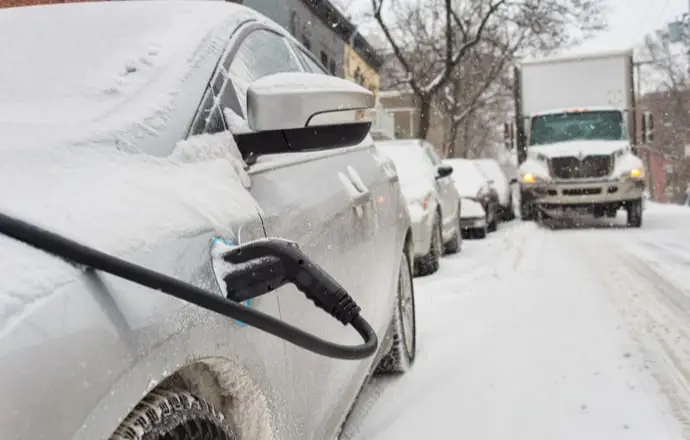
Does cold weather reduce the range of electric vehicles (EVs)? The short answer is yes. There are various reasons for this, which are explored below along with exactly how great this effect is. However, it’s also true that the impact of temperature can be reduced with some planning, and there is a lot of variation. EVs also have some advantages over combustion engines in the cold weather.
How Big Is The Impact?
Numerous tests have been carried out to quantify the impact of temperature on range. For example, a survey conducted by the AAA in the USA with 5 different models concluded that range fell by an average of 41% at temperatures of around minus 6 degrees Celsius. Another larger study in Norway tested 20 different EVs and found quite large differences in performance between different models. For example, the Hyundai Kona saw only a 9% drop while the official range of the Opel Ampera-e fell by almost 30%. This needs to be seen in the context of the range capacity of the car itself. A 30% reduction on a range of say 200 miles is a lot less impactful than on a range of 120, for example, and all of this depends on what range is needed by particular owners.
Other similar tests have been conducted, but it should be noted that the locations for these tests – Chicago, Norway, Connecticut, etc – are much colder in the winter than the temperate UK, so variations in range can be expected to be less in our moderate climate.

Another survey using actual data submitted by drivers drew some slightly different conclusions. Geotab analysed ranges from low right through to very high temperatures, achieved by real drivers, drawn from 4,200 connected electric vehicles and over 5 million trips. They found that the “curve” of achieved range in different temperatures was very similar across makes and models. This curve demonstrates that both cold and hot weather impact negatively on range, but cold weather has much more of an impact. It also shows that 21.5 degrees Celsius is the optimum temperature for battery efficiency, and cars will generally perform above their rated range around that temperature. While at minus 15, EVs will only perform at around 54% of their rated range, at 21.5 degrees they are performing at 115% of it.
Other sources also point to the difference in test conditions and what drivers actually seem to achieve in reality. Volkswagen Financial Services Fleet Division has reported that while range might drop by as much as 50% in cold weather, in practice it generally only falls by 20-30%. E-zoomed claims that compared with theoretical drops in range of up to 40%, actual average drops are more like 12%, going up to 25% if the car heating is being used.
With this amount of variation in the figures, it’s important to understand more about exactly how range is affected by cold weather, and what can be done to minimise the impact.

What Causes It?
Lithium-ion batteries perform more sluggishly when it’s cold. In temperatures below around 4 degrees Celsius, the battery will not perform at its best. However, the main reason for the reduced range is auxiliary load. In other words, in cold weather more power is being drawn from the battery so it runs down quicker. The battery itself needs to be kept warm in order to perform adequately without suffering damage. So when it’s cold, some power is being diverted to warm up the battery itself. Then there’s in-car heating. A combustion engine generates heat as a side-effect of how it runs, so heating a conventional car while it’s running doesn’t use significant amounts of additional fuel. That’s not the case with an electric vehicle, and so if power is needed to heat the air inside the car, this comes directly from the battery and will use power that could otherwise be used for mileage.
However, there are numerous other factors that have a big impact on the range of an EV. These include length of journey, terrain, speed, driver habits and start conditions. An interactive tool on the Geotab website illustrates all of this using a database of actual observed performance. It presents a minimum and maximum achieved range per make, model and battery size for each selected temperature, with the option of building in an annual degradation in battery performance.
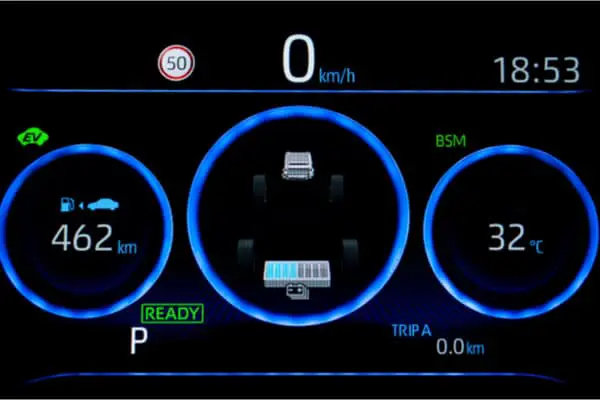
What it shows is that the variation in range caused by other factors is bigger than the variation caused by cold weather. Looking at data for a 2019 Nissan Leaf, for example, at minus 10 degrees Celsius, the worst performing cars managed a range of 58 miles while the best performers were up at 112 miles (generating an average of 86 miles). So the worst range is only just over half the best range, a variation that has nothing at all to do with temperature but is entirely down to other factors.
Similarly at 0 degrees the difference between worst and best is 70 versus 143 miles (resulting in an average of 110 miles). At the optimum temperature of 21 degrees, the variation in performance is 104 to 204 miles (an average of 156 miles). These were the figures at the time of writing but the tool is dynamic so the numbers will change over time.
This does illustrate the fact that temperature matters. Looking only at the averages, these were 86 miles at minus 10, 110 at zero and 156 at 21 degrees. This is a big difference, but averages can hide the fact that other conditions influence range even more than this, some of which drivers can influence by changing how they drive and how they prepare for a journey.
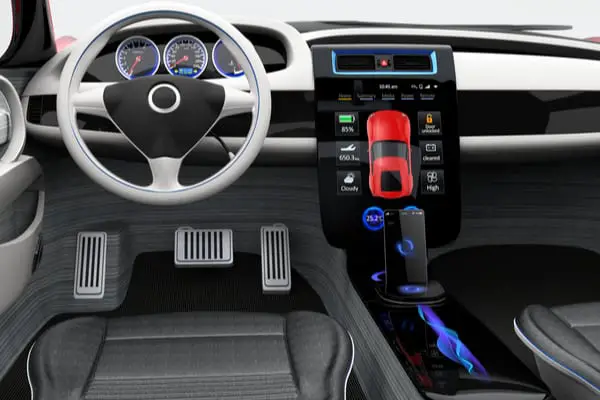
How Can The Impact Be Reduced?
- Heat the human, not the car. Accessories such as heated car seats and steering wheels reduce the need to heat the air inside the car, which is a very draining demand on the battery.
- Make use of the pre-conditioning settings. EV functionality allows drivers to turn on the heating and warm up the car before you are ready to drive it. This can generally be done using a smartphone app, and can be scheduled.
- If possible, get the car fully heated before travelling and while it’s still plugged in (not charging), so the power used will come from the electricity supply and not the battery. If the car is already up to temperature when you get in there will be much less need for in-car heating while you’re on the move.
- Again if possible, keep the car plugged in on very cold days (not charging, just plugged), enabling the car’s systems to keep the battery closer to an optimum temperature.
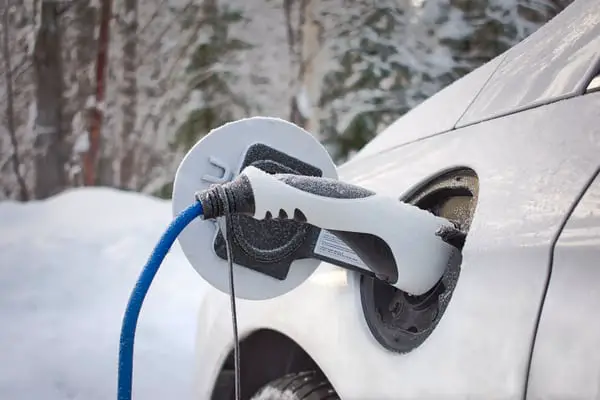
- Keep the speed down: driving more slowly is more battery-efficient and increases range.
- Avoid sudden starts and stops; a smoother ride is less impactful on the battery and avoids hard braking which drains power.
- Deploy the eco driving mode which reduces acceleration and saves power. This has the additional benefit of reducing power to the wheels, making it less likely that a wheel spin will occur on snow or ice.
- If possible, reduce the number of stops and try to avoid multiple short journeys.
- If you can, keep the vehicle in a garage overnight where it won’t get so cold. If you don’t have access to a garage, try and park in a sunny spot; even in the winter, warmth from sunlight will make a difference.
- Avoid excess weight in the car or using a roof rack, as that will impact on range.
- Make sure your tyres are inflated correctly. Tyres that don’t have enough air in them, or too much, have more effect on mileage than is often assumed.
- In some rural areas it might be worth exploring the option of winter tyres.

- To avoid running out of juice, ensure that there is at least 20% capacity in the battery before starting out, because the battery itself needs some charge to warm itself up for use. Having said that, if the battery does start to get low during a journey, you should get plenty of warnings. It’s also claimed that simply switching off and parking for 30 to 60 minutes will leave you with enough battery power when it’s going again to get a few more miles, often enough to get home or reach the nearest charging point.
Going Electric In The Cold
As well as range, many cars are also set up so that performance is reduced in cold weather to protect the battery. Regenerative braking is more limited and charging is slower.
On the other hand, some aspects of EVs are very well suited to cold weather. They are generally more stable because the battery makes them heavier, so they are easier to drive on snow and ice. Using the eco driving mode, as mentioned above, can make it less likely that the wheels will spin on a slippery road surface because it reduces the amount of power going to the wheels. And the pre-conditioning functionality removes what for some combustion engine car drivers is a perennial winter nightmare: going out in the morning and having to start the engine and remove first ice then condensation off the windows and get into a freezing cold car. Using a smartphone app, you can make sure the car and its battery are warm and toasty before you’re ready to go, without having to unlock it or use fuel (particularly if you can keep the car plugged in overnight).
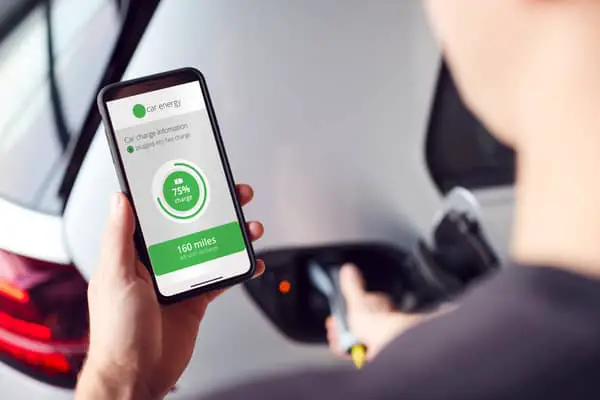
Conclusion
It’s undeniable that electric vehicles ranges are lower in cold weather. Drivers need to understand the likely impact of this and plan for it. However, with advance planning and adjustments in driving habits, the impact of cold weather on range can be significantly reduced. Electric vehicles also have some advantages in cold weather over conventional petrol or diesel cars.
As batteries improve and ranges on newer models get ever higher, the impact of the cold weather reduction will become less significant. Other innovations are also on the way which could help enormously. For example the heat-pump functionality used in some Teslas and the Jaguar I-Pace draws heat from the electric motor, bypassing the need for battery load. Solid state batteries are also in development, which could bring all kinds of improvements.
